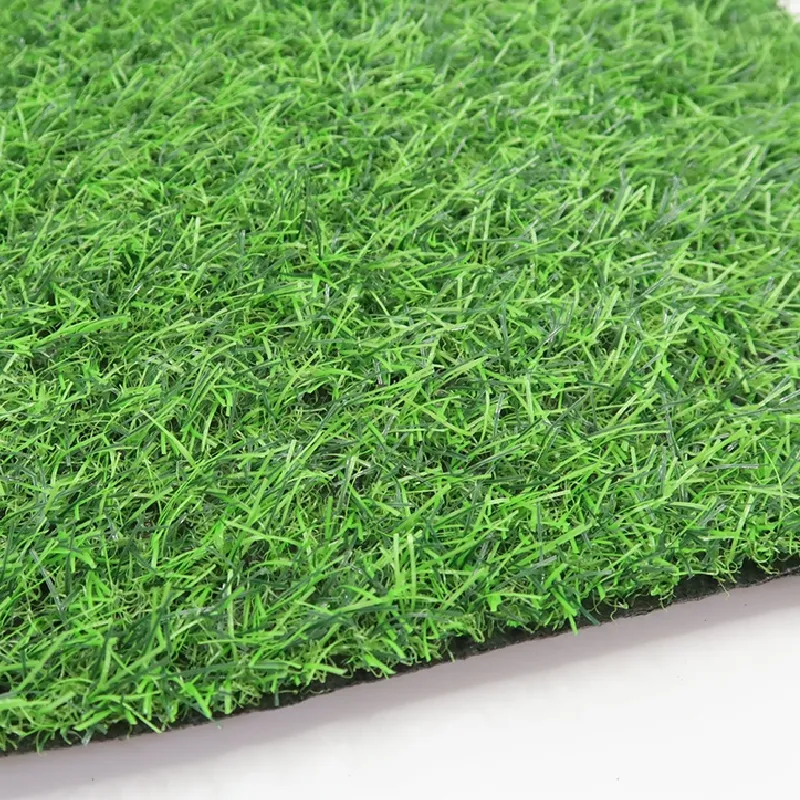
- Afrikaans
- Arabic
- Belarusian
- Bengali
- Czech
- Danish
- Dutch
- English
- Esperanto
- Estonian
- Finnish
- French
- German
- Greek
- Hindi
- Hungarian
- Icelandic
- Indonesian
- irish
- Italian
- Japanese
- kazakh
- Rwandese
- Korean
- Kyrgyz
- Lao
- Latin
- Latvian
- Malay
- Mongolian
- Myanmar
- Norwegian
- Persian
- Polish
- Portuguese
- Romanian
- Russian
- Serbian
- Spanish
- Swedish
- Tagalog
- Tajik
- Thai
- Turkish
- Turkmen
- Ukrainian
- Urdu
- Uighur
- Uzbek
- Vietnamese
sustainable artificial grass
Dec . 04, 2024 17:17 Back to list
Sustainable Artificial Grass A Greener Alternative
The quest for sustainability in landscaping and recreational activities has led to the development of eco-friendly alternatives to traditional landscaping materials. Among these innovations is sustainable artificial grass, which is redefining the way we approach outdoor spaces. This synthetic solution not only enhances the aesthetics of lawns and parks but also addresses environmental concerns associated with conventional grass maintenance.
Traditional lawns require a significant amount of resources to maintain water, fertilizers, pesticides, and regular mowing. This contributes to water scarcity, chemical runoff, and increased carbon emissions. In contrast, sustainable artificial grass offers a resilient and visually appealing alternative that minimizes these resource requirements. Made from recycled materials or produced through sustainable manufacturing processes, modern artificial grass is designed to reduce environmental impact while providing a realistic lawn experience.
One of the primary benefits of sustainable artificial grass is its water conservation abilities. In regions experiencing drought or strict water usage regulations, replacing natural grass with synthetic alternatives can significantly decrease water consumption. Once installed, sustainable artificial grass requires no watering, thus conserving precious freshwater resources. As climate change continues to affect global weather patterns, the urgency to find water-efficient solutions becomes apparent. This transition not only benefits individual homeowners but also communities aiming to reduce overall water usage.
Moreover, sustainable artificial grass is often made from recycled materials, such as recycled plastics, which helps in reducing waste and promoting a circular economy. Companies are increasingly adopting eco-friendly production techniques, ensuring that their products contribute positively to the environment. For instance, some manufacturers utilize materials sourced from post-consumer waste, reducing landfill contributions and conserving natural resources. By choosing artificial grass made from sustainable materials, consumers can play a role in minimizing plastic waste, supporting recycling initiatives, and endorsing responsible manufacturing practices.
sustainable artificial grass

Another critical factor to consider is the durability and longevity of artificial grass. High-quality sustainable options are designed to withstand various weather conditions without fading or deteriorating. This means that once installed, artificial grass can last for many years, often with a lifespan of 15 to 25 years, depending on the quality. The longevity of synthetic grass not only reduces the frequency of replacement but also minimizes the environmental footprint associated with manufacturing, transporting, and installing new grass products. This characteristic makes sustainable artificial grass an economically viable option in the long run.
In terms of maintenance, sustainable artificial grass requires minimal effort compared to natural lawns. Eliminating the need for mowing, trimming, and fertilization significantly reduces the emission of greenhouse gases, promoting cleaner air quality in urban settings. Additionally, without the need for chemical pesticides, homeowners can create a safer environment for pets and children. This low-maintenance aspect is especially appealing in regions where residents seek to enjoy outdoor spaces without the time and labor associated with traditional lawn care.
It is essential, however, for consumers to ensure they select products that are genuinely sustainable. Not all synthetic grass is created equal, and it is vital to investigate the materials and production processes behind the products being purchased. Certifications from reputable environmental organizations can guide consumers in making informed choices.
As communities become increasingly aware of their environmental impact and the importance of sustainable practices, sustainable artificial grass continues to gain traction. From residential lawns and public parks to sports fields and playgrounds, this innovative solution allows for the enjoyment of beautiful green spaces without compromising ecological integrity.
In conclusion, sustainable artificial grass represents a promising step toward achieving more eco-friendly landscaping solutions. By conserving water, reducing waste, and minimizing harmful emissions, sustainable artificial grass offers an appealing alternative that meets both aesthetic and environmental needs. As technology advances and awareness grows, the adoption of sustainable artificial grass is likely to increase, benefiting not only homeowners but also the planet as a whole. Transitioning to environmentally friendly options in landscaping is a proactive and necessary step toward a sustainable future.
-
The Benefits of Artificial Turf for Indoors
NewsJul.15,2025
-
How Artificial Grass Suppliers Ensure Quality Products
NewsJul.15,2025
-
Artificial Grass and Pets: A Space for Relaxation
NewsJul.08,2025
-
Balcony & Outdoor Decoration with Artificial Grass
NewsJul.08,2025
-
Best Indoor Artificial Grass for Home
NewsJul.07,2025
-
Best Pet Turf for Dogs: Safe & Durable Artificial Grass Options
NewsJul.07,2025
Products categories









